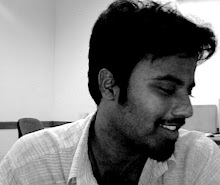Indian economy is having a good time now. Much of the credit would go to the IT boom that India had in the recent times. Today, design as a new field has emerged as a consultancy job which is equally leading the way of the Indian economy, as engineering, medicine and recently IT had been successful in doing. But there is the other side of the coin too. Though it is not a big problem as of now, but down the line, there are two kinds of possible problems. One is brain drain. But this, as in the case of IT sector, may give Indian economy a boost. Second is saturation of quality and quantity of design education, service and thinking. But in the wake of globalization, this may be a remote possibility. It lies in the education system that Indian design fraternity follows. I would like to focus on this crucial aspect of design education in this article. In a recently held design conference in India, designers from all over the world shared their views on brand building and how to deal with the clients and being a successful designer. There were a few who focused their attention on design education, showed a healthy concern of young Indian designers losing their roots and aping the western way of design. But the people discussing these points were Dutch and the British. It’s not bad. But not inviting any Indian counterpart there to speak about the same is definitely bad. Its not that there has been no eminent design educator in these four decades of design education already been established in India. Education can be categorized into three different sectors. i) Academic or non-professional stream which includes, courses such as BA, MA, Bcom, Bsc, MSc, etc. ii) Professional or job oriented stream which includes courses such as B.Tech, MBBS, LLB, IT) Fine arts stream which has painting, sculpting, music, dance and theatre under it.Fields such as Architecture, Mass communication (including journalism), Design etc. fall under both the streams of fine arts and professional courses because they have both functional and aesthetic aspects involved in them. Design as a specialized field of learning is a product of the modern development of industrialization or mass production. Prof. Balaram in his book Thinking Design(1998) states that the industrial revolution changed the past methods of production and this led to the birth of architecture and design. Both architecture and design, together have changed the whole way of seeing things, combining both micro and macro views. Design existed even during early times. In traditional system of crafts, the knowledge, the investment, the goods, the products, design and manufacturing, everything is handled by the same person. Thus design is not a specialized field in this system. Artisans taught their crafts - carpentry, pottery, weaving etc to the next generation. Commodities were produced according to the need and the social structure of that particular society. Thus the quality and quantity of this education was naturally controlled. In modern system, you have different people to handle different sectors of the process. This is a result of large scale manufacturing. This lead to the emergence of design as a specialized skill separated from the linked aspects of manufacturing etc. In the modern system of education, you don’t have a hereditary occupation hence no hereditary learning and thus there is a scope of an occupational shift. Though these are some positive aspects of the modern system, there is one impending danger in it. It is the delinking of the job needs, from the educational planning.Design education has a great responsibility of not taking design profession to a point of saturation. Considered, every child is creative. The child must be creative in a certain field. Design boom happening in India should not make people believe that being in the design field will be the best for their child, this happened in the schools offering the knowledge. Eames in his report suggests maintaining the level and quality of education being imparted in the schools. Is the same being maintained? In view of all this, and after four plus decades since the first design school in India was established (keeping in mind the Eames report), a National Design policy has finally been given a green signal, in the aid of the design, designers and the society. As a final year design student, I now think, our predecessors did everything to come up with ways of dealing with the identity crisis design and designers had. Giving everything we would have wanted. Recognition, stardom status, and now a national design policy on our lap. We have nothing to do but learn the job and enter the market and sell the product which maintains/defines the best quality. We have been and the next generation of designers will definitely be brought up in a very cross cultural fashion, which should be made the best and most of without losing the grips on the reality and thus being a responsible designer and a human being.
Annexure I Pupul Jayakars excerpts on The Eames report - on which NID was set up in 1961 The Eames report, a document familiar to most students of design in this country, unique in its insight, its demands for quality and the depth and width of its thinking. Commencing the report with the famous phrases of the Gita : ‘On man's right to work but never to the fruits thereof', the report sees the ‘change in India, a change in kind and not a change of degree'. Seeing the complexities of the revolution in communications that had struck India with terrific impact, ‘made more violent because of the nature of India's own complex situation, isolation and tradition', the report focuses on India's tradition and a philosophy that is familiar with the meaning of creative destruction and stresses the need to appraise and solve the problems of our times with tremendous service, dignity, and love'. ‘The search for form demands an investigation into values and qualities that Indians hold important to a good life', and that ‘there be close scrutiny of those elements that make up a standard of living'. Annexure II Excerpts from Eames’ report Security in India, lies in change and conscious selection and correction in relation to evolving needs. India stands to face the change with three great advantages : i) She has a tradition and a philosophy familiar with the meaning of creative destruction. ii) She need not make all the mistakes others have made in the transition. iii) Her immediate problems are well defined: food, shelter, distribution, population. guide Prof Nagaraj




















